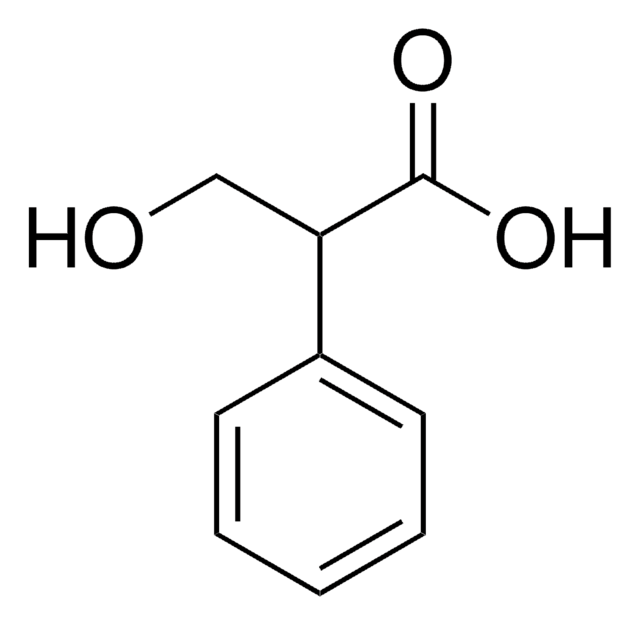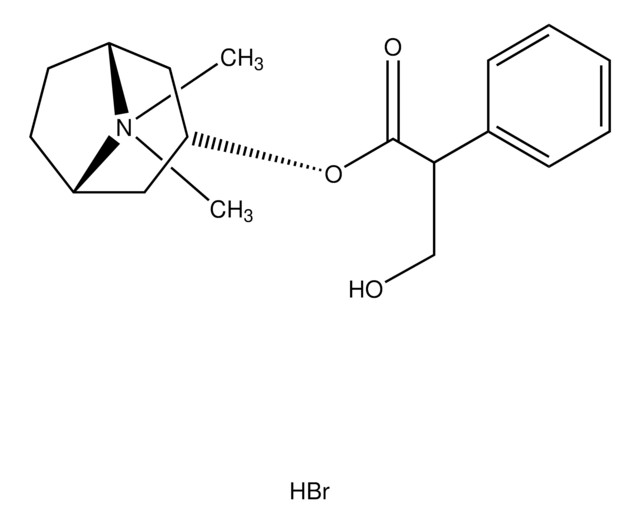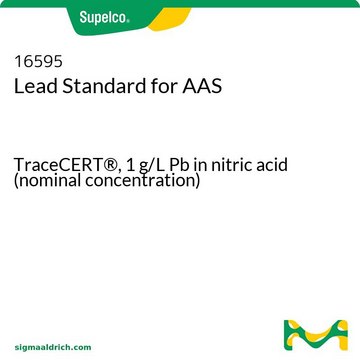Wichtige Dokumente
11332
Atropin -sulfat (Salz) Monohydrat
tested according to Ph. Eur.
Synonym(e):
Atropini sulfas, α-(Hydroxymethyl)-phenylessigsäure-8-methyl-8-azabicyclo[3.2.1]oct-3-ylester, (±)-Tropintropat
About This Item
Empfohlene Produkte
Agentur
USP/NF
tested according to Ph. Eur.
Qualitätsniveau
mp (Schmelzpunkt)
189-192 °C (A) (lit.)
Löslichkeit
water: soluble 2500 g/L at 4 °C
Anwendung(en)
pharmaceutical (small molecule)
SMILES String
O.OS(O)(=O)=O.CN1[C@H]2CC[C@@H]1C[C@@H](C2)OC(=O)C(CO)c3ccccc3.CN4[C@H]5CC[C@@H]4C[C@@H](C5)OC(=O)C(CO)c6ccccc6
InChI
1S/2C17H23NO3.H2O4S.H2O/c2*1-18-13-7-8-14(18)10-15(9-13)21-17(20)16(11-19)12-5-3-2-4-6-12;1-5(2,3)4;/h2*2-6,13-16,19H,7-11H2,1H3;(H2,1,2,3,4);1H2/t2*13-,14+,15+,16?;;
InChIKey
JPKKQJKQTPNWTR-CHYDPLAESA-N
Angaben zum Gen
human ... CHRM1(1128) , CHRM2(1129) , CHRM3(1131)
Suchen Sie nach ähnlichen Produkten? Aufrufen Leitfaden zum Produktvergleich
Anwendung
Biochem./physiol. Wirkung
Signalwort
Danger
H-Sätze
Gefahreneinstufungen
Acute Tox. 2 Inhalation - Acute Tox. 2 Oral
Lagerklassenschlüssel
6.1A - Combustible acute toxic Cat. 1 and 2 / very toxic hazardous materials
WGK
WGK 3
Persönliche Schutzausrüstung
Eyeshields, Faceshields, Gloves, type P3 (EN 143) respirator cartridges
Hier finden Sie alle aktuellen Versionen:
Besitzen Sie dieses Produkt bereits?
In der Dokumentenbibliothek finden Sie die Dokumentation zu den Produkten, die Sie kürzlich erworben haben.
Unser Team von Wissenschaftlern verfügt über Erfahrung in allen Forschungsbereichen einschließlich Life Science, Materialwissenschaften, chemischer Synthese, Chromatographie, Analytik und vielen mehr..
Setzen Sie sich mit dem technischen Dienst in Verbindung.







